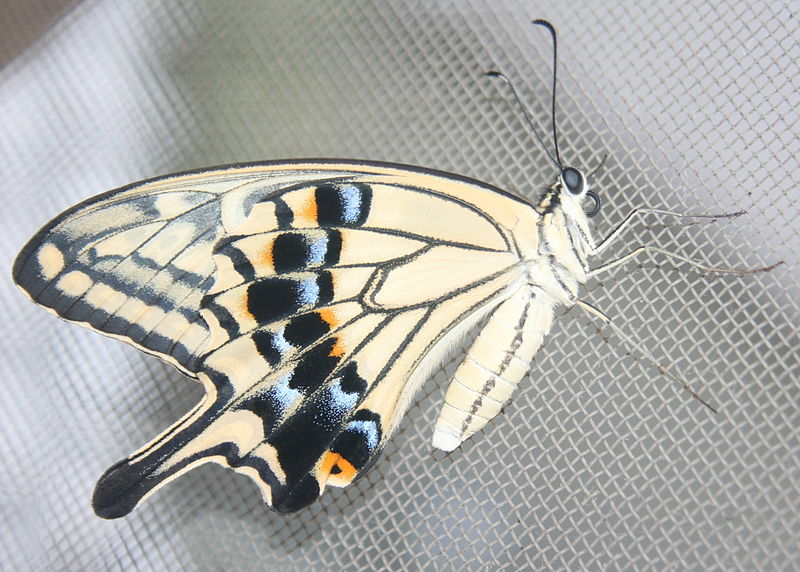Reproduction
The life cycle
of a Papilio xuthus is defined by four stages; ovum
(egg), larva (caterpillar), pupa (chrysalis), imago (adult)
(Smart 1985). Under certain conditions, such as unusual climatic
conditions, the cycle can be delayed or arrested, but the
typical life cycle lasts about one year (Smart 1985). The
survival rate of the eggs laid is typically one or two out of
every hundred laid. Although butterflies are more commonly seen
than any other morphological stage, they are the rarest of the
phases of the life history (Schappert 2000).
rate of the eggs laid is typically one or two out of
every hundred laid. Although butterflies are more commonly seen
than any other morphological stage, they are the rarest of the
phases of the life history (Schappert 2000).
During the adult butterfly phase of the cycle, mating takes
place. The males are the more active and initiate sex, often
patrolling and defending their territory looking for possible
mates (Preston-Marham 1999). Sexual communication between
butterflies is more complicated than one might initially
believe. A P. xuthus is only able to successfully mate
with another P. xuthus, therefore, sexual stimuli and
responses must only attract members of the same species
(Spordoni et al. 1984). Although it has been studied more
recently, courtship between males and females is still poorly
understood and extremely complicated. Mates must look, feel, and
smell right to each other before initiating of mating can take
place (Preston-Marham 1999). Behavioral, physiological, and
biochemical mechanisms are all used to help make the decision
 (Spordoni et al. 1984). The chief sexual stimuli for
P.
xuthus is the transverse yellow bands on a black background
that decorate the wings (Spordoni et al. 1984).
(Spordoni et al. 1984). The chief sexual stimuli for
P.
xuthus is the transverse yellow bands on a black background
that decorate the wings (Spordoni et al. 1984).
Once both mates have accepted one another, the process itself
takes about an hour on average (Spordoni et al. 1984). Sex is a
complicated process of moves and counter moves done by both
males and females, but when completed, a batch of fertilized egg
is formed in the female (Preston-Marham 1999). When the time
comes for the eggs to be laid, the female searches for a
suitable leaf to lay them on, landing briefly on several plants
and using
sight, smell, and taste to find the perfect one (Preston-Marham
1999). The process of selecting a leaf to deposit eggs is a
great deal more complicated than one might first believe. An
interesting study was done on oviposition (the process of laying
eggs) stimulants and what determines where a
P. xuthus
lays her eggs.
There are several different types of
chemoreceptors on the forelegs of males and females, and five
different chemicals which are able to stimulate those receptors.
The leaf chosen must trigger a certain combination of receptors
on the individual P. xuthus (Ryuda et al. 2013). The
large and simple round eggs sit on leaves and resemble to feces
of birds (Wagner 2005). When the time comes for the egg to
hatch, the larva eats its way out of the shell and begins to
aggressively consume its host plant and grow in size. After a
time of eating and growth, the larva chooses a site and molts
itself into a pupa (Smart 1985). The mature
P. xuthus
will emerge from the pupa as a black and yellow
colored-butterfly (Miller et al. 2004).
Adaptation Home Page Interactions